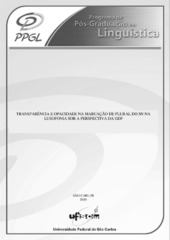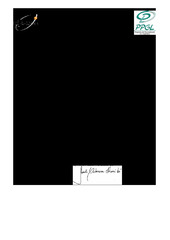Mostrar el registro sencillo del ítem
Transparência e opacidade na marcação de plural do SN na lusofonia sob a perspectiva da GDF
| dc.contributor.author | Rocha, Adenilson Cardoso dos Santos | |
| dc.date.accessioned | 2020-09-18T00:04:55Z | |
| dc.date.available | 2020-09-18T00:04:55Z | |
| dc.date.issued | 2020-08-28 | |
| dc.identifier.citation | ROCHA, Adenilson Cardoso dos Santos. Transparência e opacidade na marcação de plural do SN na lusofonia sob a perspectiva da GDF. 2020. Dissertação (Mestrado em Linguística) – Universidade Federal de São Carlos, São Carlos, 2020. Disponível em: https://repositorio.ufscar.br/handle/ufscar/13248. | * |
| dc.identifier.uri | https://repositorio.ufscar.br/handle/ufscar/13248 | |
| dc.description.abstract | This study analyzes, from the perspective of the Functional Discourse Grammar (FDG), of Hengeveld e Mackenzie (2008), the plural marking in the noun phrase in spoken Portuguese in Portuguese-speaking countries that have Portuguese as their official language, namely: (i) Brazil; (ii) Portugal; (iii) Angola; (iv) Cape Verde; (v) Guinea-Bissau; (vi) Mozambique; (vii) São Tomé and Príncipe; and (viii) East Timor, using speech samples from the oral corpus organized by the Linguistics Center of the University of Lisbon. Corroborating the hypothesis that the Brazilian variety is the most transparent one, considering studies that prove less expressive use of the plural copy in all elements of the noun phrase (NP) in Brazilian Portuguese (LIPSKI, 2008), the general objective of the study is to investigate violations of transparency in the plural marking in Portuguese varieties, by observing the definite (“five horses”) and indefinite (“The horses”) quantification, by means of the theoretical contribution of Leufkens (2015) and Câmara et al. (2017). Knowing that linguistic transparency occurs, basically, in the one-to-one relationships between meaning and form, we seek to verify the occurrence of multiple forms of plural marking in the context of noun phrases (NPs) in each of the varieties, with the specific objectives of investigating: (i) the presence of explicit variants and variants (0); (ii) the plural marking inside or outside the nucleus of the NP; (iii) composition of SN; and (iv) the position of internal constituents of the NP. The study assumes the perspective that there is opacity when there are repetitions of plural marking in both quantifications (definite and indefinite) and that there is transparency when the plural is marked only once, a perspective assumed by Leufkens (2015). For the verification of how the plural marking occurs in the agreement and number agreement within the scope of the selected corpus, through the investigation of relations of transparency and opacity between the representational and morphosyntactic levels, a qualitative-quantitative methodology was adopted, with the support of the Goldvarb software. The results prove the initial hypothesis, as the data reveal a more expressive use of the plural only in one of the constituents of the NP in the Brazilian Portuguese; the Timorese variety, on the other hand, is the opaquest variety, since the plural marking occurs in all the constituents of the analyzed NPs. It is important to reiterate that the results of the analysis are restricted to the universe of the corpus analyzed, with no intention of offering a comparative analysis that generalizes the behavior of the varieties. What is observed here are usage trends, which may be proven in the future with a more expressive data sampling. | eng |
| dc.description.sponsorship | Não recebi financiamento | por |
| dc.language.iso | por | por |
| dc.publisher | Universidade Federal de São Carlos | por |
| dc.rights | Attribution-NonCommercial-NoDerivs 3.0 Brazil | * |
| dc.rights.uri | http://creativecommons.org/licenses/by-nc-nd/3.0/br/ | * |
| dc.subject | Gramática discursivo funcional | por |
| dc.subject | Marcação de plural | por |
| dc.subject | Transparência | por |
| dc.subject | Opacidade | por |
| dc.subject | Functional discourse grammar | eng |
| dc.subject | Plural marking | eng |
| dc.subject | Transparency | eng |
| dc.subject | Opacity | eng |
| dc.title | Transparência e opacidade na marcação de plural do SN na lusofonia sob a perspectiva da GDF | por |
| dc.title.alternative | Transparency and opacity in SN plural marking in lusophonia under the GDF perspective | eng |
| dc.type | Dissertação | por |
| dc.contributor.advisor1 | Stassi-Sé, Joceli Catarina | |
| dc.contributor.advisor1Lattes | http://lattes.cnpq.br/1314068157460143 | por |
| dc.description.resumo | Este estudo analisa, pelo viés da Gramática Discursivo-Funcional (GDF) de Hengeveld e Mackenzie (2008), a transparência e a opacidade na marcação de plural no sintagma nominal (SN) no português falado nos países lusófonos que contam com o Português como língua oficial, quais sejam: (i) Brasil; (ii) Portugal; (iii) Angola; (iv) Cabo Verde; (v) Guiné-Bissau; (vi) Moçambique; (vii) São Tomé e Príncipe; e (viii) Timor-Leste, utilizando amostras de fala do córpus oral, organizado pelo Centro de Linguística da Universidade de Lisboa. Corroborando a hipótese de que a variedade brasileira é a mais transparente quanto à marcação de plural no SN, tendo em vista estudos que comprovam uso menos expressivo da cópia de plural em todos os elementos do SN no português brasileiro (LIPSKI, 2008), o objetivo geral do estudo é investigar a transparência e a opacidade na marcação do plural na lusofonia, observando a quantificação definida (cinco cavalos) e indefinida (os cavalos ), tendo como aporte teórico os trabalhos de Leufkens (2015) e Câmara et al. (2017). Sabendo-se que a transparência linguística se dá, basicamente, na relação de um-para-um entre significado e forma, busca-se verificar a ocorrência de múltiplas formas de marcação do plural no contexto de SNs em cada uma das variedades, tendo como objetivos específicos investigar: (i) a presença de variantes explícitas e variantes (0); (ii) a marcação de plural no núcleo ou fora do núcleo do SN; (iii) composição do SN; e (iv) a posição dos constituintes internos do SN. O estudo assume a perspectiva de que há opacidade quando há repetições de marcas de plural em ambas as quantificações (definida e indefinida) e que há transparência quando marca-se somente uma vez o plural, prisma assumido por Leufkens (2015). A metodologia é qualitativa-quantitativa para a verificação, por meio desses parâmetros funcionais, de como se dá a marcação de plural na concordância e no acordo de número no âmbito do córpus selecionado, investigando relações de transparência e opacidade entre os níveis representacional e morfossintático, com apoio do programa Goldvarb. Os resultados comprovam a hipótese inicial, pois os dados revelam uso mais expressivo de plural marcado somente em um dos constituintes do SN no português brasileiro; já a variedade timorense é a mais opaca, pois a marcação do plural se dá em todos os constituintes dos SNs analisados. Reitera-se que os resultados da análise são restritos ao universo dos inquéritos analisados, não havendo pretensão de oferecer uma análise comparativa que generalize o comportamento das variedades. O que se observa aqui são tendências de uso, que poderão ser futuramente comprovadas com uma amostragem mais expressiva de dados. | por |
| dc.publisher.initials | UFSCar | por |
| dc.publisher.program | Programa de Pós-Graduação em Linguística - PPGL | por |
| dc.subject.cnpq | LINGUISTICA, LETRAS E ARTES::LINGUISTICA::TEORIA E ANALISE LINGUISTICA | por |
| dc.publisher.address | Câmpus São Carlos | por |
| dc.contributor.authorlattes | http://lattes.cnpq.br/5370889365859604 | por |


